Click on images to enlarge
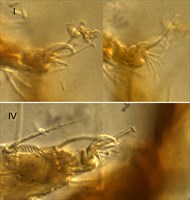
Fig. 1. Oligonychus ilicis adult female syntype - detail of claw I (with detail of proximoventral hairs) and IV.
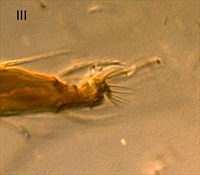
Fig. 2. Oligonychus ilicis adult female syntype - detail of claw III (with detail of the many pairs of proximoventral hairs).
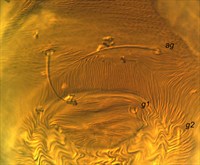
Fig. 3. Oligonychus ilicis adult female syntype - detail of pattern of pregenital striae.

Fig. 4. Oligonychus ilicis adult female syntype - detail of pattern of pregenital striae.
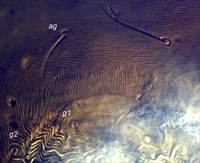
Fig. 5. Oligonychus ilicis adult female syntype - detail of pattern of pregenital striae.
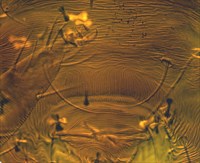
Fig. 6. Oligonychus ilicis adult female syntype - detail of pattern of pregenital striae.
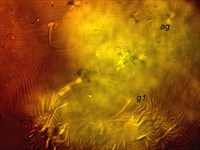
Fig. 7. Oligonychus ilicis adult female syntype - detail of pattern of pregenital striae
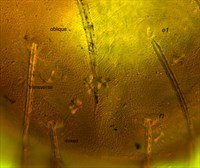
Fig. 8. Oligonychus ilicis adult female syntype - detail of pattern of dorsal striae between setae e1 -e1 (oblique), e1-f1 (transverse) and f1-f1 (mixed longitudinal and transverse).
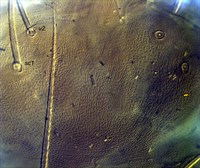
Fig. 9. Oligonychus ilicis adult female syntype - detail of pattern of striae on prodorsum (mostly longitudinal).
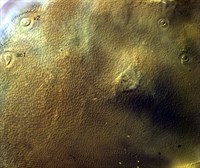
Fig. 10. Oligonychus ilicis adult female syntype - detail of pattern of striae on prodorsum (mostly longitudinal).
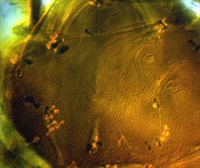
Fig. 11. Oligonychus ilicis adult female syntype - detail of pattern of striae on prodorsum (mostly longitudinal, with some oblique).
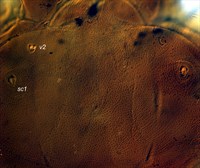
Fig. 12. Oligonychus ilicis adult female syntype - detail of pattern of striae on prodorsum (longitudinal to oblique, mixed).
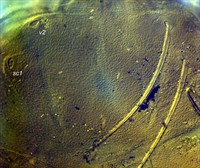
Fig. 13. Oligonychus ilicis adult female syntype - detail of pattern of striae on prodorsum (mostly transverse).
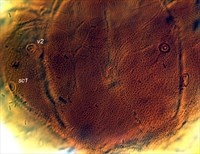
Fig. 14. Oligonychus ilicis adult female syntype - detail of pattern of striae on prodorsum (mixed).
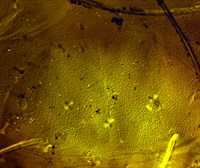
Fig. 15. Oligonychus ilicis adult female syntype - detail of pattern of striae on prodorsum (mixed).
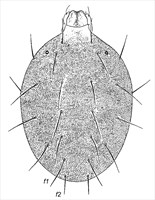
Fig. 16. Oligonychus ilicis adult female syntype - detail of dorsum, indicating setae f1 and f2 (redrawn from Pritchard & Baker 1955, Fig. 257, p. 306).
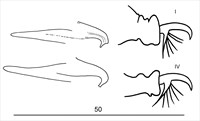
Fig. 17. Oligonychus ilicis adult male syntype - detail of aedeagus (two different focal points - shape of anterior angle changes, as specimen is not flat); and detail of claws I and IV (with six (pairs) of proximoventral hairs).

Fig. 18. Oligonychus ilicis adult male syntype - detail of aedeagus (three different focal points, specimen not flat).
Material examined
types; non-types
Taxonomy
Subfamily Tetranychinae
Tribe Tetranychini
Common Name
Southern red mite
Distribution
PRESENCE IN AUSTRALIA IN DOUBT (see Notes)
+Australia, Brazil, Italy, Japan, Korea, Paraguay, The Netherlands, *USA (South Carolina)
Taxonomy Changes
Tetranychus ilicis McGregor 1917
Paratetranychus ilicis (McGregor) McGregor 1919
Oligonychus ilicis (McGregor) Pritchard & Baker 1955
Diagnosis
Female
- dorsal setae on weakly developed tubercles (not always visible in mounted specimens) (Fig. 8)
- opisthosomal setae f2 (50-65) much shorter than f1 (89-95) (subequal in related taxa)
- empodia I-IV = short, strongly curved claw, as long as or slightly shorter than (six pairs) proximoventral hairs (Figs 1, 2) [according to McGregor 1950: empodial claw curving weakly for 2/3 length then bent sharply, talon-like]; tenent hairs almost twice as long as empodial claw (Fig. 2)
- tarsus I with the sockets of three tactile setae and one solenidion proximal to, and one tactile seta overlapping, the sockets of the proximal duplex seta
- tarsus II with the sockets of two tactile setae and one solenidion proximal to, and two tactile setae overlapping, the sockets of the duplex seta
- pregenital striae longitudinal (Figs 3-7)
- dorsal striae mostly transverse, except irregular oblique and longitudinal between setae e1-e1 and mixed irregular striae between f1-f1 [Pritchard & Baker (1955) provide a similar description] (Fig. 8)
- peritreme ending in simple bulb, small oblong expansion
- pattern of striae on prodorsum varies - mostly longitudinal (Figs 9, 10), longitudinal with oblique (Figs 11, 12), mostly transverse (Fig. 13) or irregular mixed striae (Figs 14, 15)
- dorsal opisthosomal setae f1 obviously longer than f2 (Fig. 16)
- lobes on dorsal striae rounded (large on prodorsum), closely spaced, broader than tall
- ventral striae with small lobes
- spinneret of palp about as long as wide
- chaetotaxy for legs I-IV from types (not completely visible):
- femora 8, 6, 2, 1
- genua 5, 5, 2, 2
- tibiae 8(1), 5, 5, 5
- tarsi 16(3+3), 14(2+3), 9(1+0), 9(1+0)
- eggs with dorsal stipe
- purple or dark ferruginous to reddish-brown with a pale pink area centrally on prodorsum, palps pink; legs pale amber; eyes red
Male
- empodia I-IV with short, strongly curved claw as long as proximoventral hairs (Fig. 17)
- spinneret of palp small, slightly longer than wide
- tarsus I with the sockets of three tactile and three solenidia proximal to the sockets of the proximal duplex seta
- aedeagus ventrally directed, no anterior or posterior projection; dorsal margin of shaft at approx 30° angle, curving downwards/ventrally and anteriorly to form a rounded posterior margin, and an acute (to almost right-angle) ventral angle; ventrally directed projection is short, abruptly tapered, with truncate short finger-like tip (Figs 17, 18)
Hosts
> 30 recorded species of host plant, including: Azalea sp. (Ericaceae), Buxus sp. (Buxaceae), Camellia sinensis (Theaceae), Carya illinoensis (Juglandaceae), Cinnamomum camphora (Lauraceae), Clethra alnifolia (Clethraceae), Cleyer sp. (Theaceae), Coffea arabica (Rubiaceae), Cotoneaster sp., Cydonia oblonga (Rosaceae), Erica sp. (Ericaceae), Eriobotrya japonica (Rosaceae), Eucalyptus grandis, Eu. pellita, Eu. tereticornis (Myrtaceae), Fragaria sp. (Rosaceae), Ilex crenata, *Ilex opaca (Aquifoliaceae), Ixora sp. (Rubiaceae), Juglans regia (Juglandaceae), Laurus nobilis (Lauraceae), Leucothoe sp. (Ericaceae), Oryza sp. (Poaceae), Picea sp. (Pineaceae), Platanus occidentalis (Platanaceae), Psidium guajava (Myrtaceae), Pyrus communis (Rosaceae), Quercus sp. (Fagaceae), Rhexia sp. (Melastomataceae), Rhododendron schlippenbachii (Ericaceae)
Similar Taxa
Similar species recorded in Australia:
- Oligonychus coffeae (Nietner, 1861)
- Oligonychus mangiferus (Rahman & Sapra, 1940)
- Oligonychus punicae (Hirst, 1926)
- Oligonychus ununguis (Jacobi, 1905)
Similar species not yet recorded in Australia:
- Oligonychus vitis Zaher & Shehata
Biology
The females are purple to red, paler anteriorly with a pale spot medially. The mites are almost exclusively found on the dorsal surface of leaves where they cause a bronzing and browning along the midrib. In walnut, the leaves get a dirty, ashy grey appearance. Infestations are initially concentrated along the midrib of host leaves, but as the population grows, the mites spread over the rest of the leaf surface. The lower parts of the host tree tend to more severely affected, especially in trees showing water stress or drought symptoms. Heavy infestations must occur before leaf drop begins (Jeppson et al. 1975).
This species, like many other spider mites, seems to prefer dry weather conditions. During rainy seasons, populations of O. ilicis increase slowly and do not require control measures.
Jeppson et al. (1975) record that females have an ovipositional period of 3 days, during which they deposit 10-15 eggs, though they live for 15 days. Eggs can overwinter and hatch during spring months. Mite populations increase over summer with a peak mid summer, with another peak in autumn resulting in large numbers of overwintering eggs.
The type material was collected from the upper and lower surfaces of American holly leaves, Ilex opaca, from South Carolina. Included in this material was O. ununguis, a species that is very similar morphologically.
Later it was recorded as a pest of plane trees and was callled the plane tree spider mite. In eastern USA it is recorded as a pest of conifers, in southeastern USA it is a pest of azalea and camellia, in Massachusetts it is a pest of cranberries, while in California it is a pest of walnuts and sycamore. Oligonychus ilicis is recorded as a pest of coffee in Brazil, and of tea, rice, laurel, holly and boxwood in Japan.
References
+Anonymous (2006) New Plant Pests and Diseases Recorded in Australia. Australian Government Department of Agriculture, Fisheries and Wildlife.
Herron, G.A. and Rophail, J. (2008) Potential insecticides for control of Oligonychus ilicis (McGregor) (Acari: Tetranychidae), a new threat to Australian horticulture. Australian Journal of Entomology 39: 86-88
+Knihinicki, D.K. (1999) A new pest spider mite for Australia. The southern red mite. Agnote DPI-238
Knihinicki, D., Fletcher, M. and Nash, J. (1999a) Southern red mite identified in NSW. Agnote DPI-241
Knihinicki, D., Keskula, D. and Herron, G. (1999b) The southern red mite: another new pest. The Nursery Papers
*McGregor, E.A. (1917) Descriptions of seven new species of red spiders. Proceedings of the United States National Museum 51: 581-590
McGregor, E.A. (1919) The red spiders of America and a few European species likely to be introduced. Proceedings of the U.S. National Museum 56: 641-685
Migeon, A. and Dorkeld, F. (2006-2017) Spider Mites Web: a comprehensive database for the Tetranychidae. http://www.montpellier.inra.fr/CBGP/spmweb
Notes
The type specimens for this species are in poor condition, hence the photos are quite dark.
McGregor (1919) provides an excellent redescription of the species, although the aedeagus is illustrated as extremely tapering.
The presence of O. ilicis in Autralia is not confirmed. +Anonymous (2006) reports that this species has been eradicated from Australia, since the first record made by +Knihinicki (1999), and subsequent articles by Knihinicki et al. (1999a,b). However, Herron & Rophail (2008) discuss control measures for O. ilicis as a new threat to Australian horticulture.
See also Notes for O. punicae for further discussion of this species-group.
Copyright © 2018. All rights reserved.